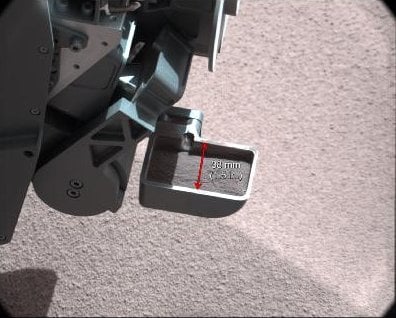This article is more than 1 year old
Curiosity probe tastes Mars soil: Dude, this reminds me of Hawaii
Aloha, potential microbial life-forms
Science lab and nuclear truck Curiosity has tasted its first Martian soil and decided it's a bit like a piece of Hawaii.
The Mars rover's CheMin instrument analysed the minerals in its fistful of dust and found the composition is similar to the basaltic volcanic soil of the islands.
"We had many previous inferences and discussions about the mineralogy of Martian soil," David Blake, principal investigator for CheMin, said. "Our quantitative results provide refined and in some cases new identifications of the minerals in this first X-ray diffraction analysis on Mars."

To test the soil, Curiosity scooped some up with its robotic arm and dumped it in the chemistry and mineral analysing instrument to get solid information on its mineralogical makeup.
Figuring out what the Red Planet is made of is an obvious method to fulfil the rover's prime objective - assessing whether microbial life has ever existed on Mars. The minerals tell boffins about the conditions under which they formed, helping identify past environmental conditions.
Chemical analysis also gives some information, but not as accurately as X-ray diffraction to assess mineralogical content. Diamond and graphite are both made up of carbon atoms, but their differing crystal structures result in two very different minerals.
Examining the Martian soil gives boffins an idea of the more recent history of the planet. Curiosity is also built to analyse rocks which are billions of years old to look further into the past. The first rock probed by the rover also showed similarity to rocks on volcanic islands like Hawaii and hinted at the possibility of flowing water on ancient Mars.
"So far, the materials Curiosity has analysed are consistent with our initial ideas of the deposits in Gale Crater recording a transition through time from a wet to dry environment. The ancient rocks, such as the conglomerates, suggest flowing water, while the minerals in the younger soil are consistent with limited interaction with water," said David Bish, CheMin co-investigator. ®
